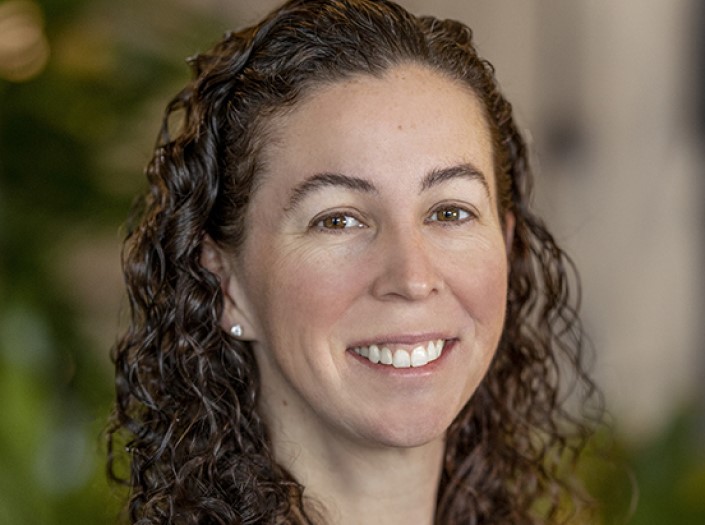Perspective |The Opioid Crisis: Why This Is Our Defining Moment

Our country is being threatened. And in many ways, the enemy is us. The numbers paint a bleak picture for our priorities as a society as they relate to the opioid crisis. Statistics from the Centers for Disease & Prevention (CDC) report more than 42,000 people died from opioid-related drug overdose in 2016, and provisional data for 2017 currently put overdose fatality rates over 62,000.1
As clinical leaders in the workers’ compensation space, we bring a unique point of view to this conversation. Managing the care of injured employee populations, where pain and its management are prevalent, we are positioned on the front line of preventive efforts against prescription opioid addiction.
We have seen firsthand the tremendous negative impact that opioids have on the recovery, health and quality of life for the patient. We have critical insight into why this problem is not just about street drugs — that prescription opioids play a definitive role in the larger crisis.
For every fatality counted, there are exponentially more people out there suffering from the impacts of opioids at the individual, family and community levels. For every one person who dies from opioid overdose, 50 more individuals have an opioid use disorder, and 272 misuse prescription opioids in some way.2
Most importantly, we know that change is possible. But it doesn’t happen without a committed effort.
Public Health Approach
The opioid epidemic was declared a national public health emergency in October 2017. A full year later, we are seeing perhaps the first sweeping action on a federal level that rises to the urgency of this declaration, with Congress passing the SUPPORT (Substance Use Disorder Prevention That Promotes Opioid Recovery and Treatment) for Patients and Communities Act.
The legislation — which aims to advance treatment and recovery initiatives, boost abuse prevention efforts, and increase policy and enforcement initiatives — is a good start, albeit a delayed one. And there are still other opportunities for increased effort.
Despite increased allotments to the CDC, NIH and FDA in 2018, these agencies remain the David-versus-Goliath that is the opioid crisis when comparing from a cost perspective. The crisis causes the U.S. an estimated $500 billion per year inclusive of health care, criminal justice and lost productivity costs.2 U.S. opioid sales are projected to hit $18.4 billion annually by 2020.
In 2001, Purdue Pharmaceuticals spent $200 million alone on the promotion of OxyContin — a financial amount nearly twofold what the National Institutes of Health (NIH) have traditionally been allotted in previous years to research opioid use disorder and alternative pain treatments. Stack all of that up to the $500 million directed to the NIH this year, and it’s still like bringing a slingshot to a gunfight.
A continued emphasis on providing financial support to these entities will allow them to better address knowledge gaps and research treatment options for opioid use disorder, as well as new, safer pain therapies, both pharmacological and non-pharmacological. Is this a significant investment? Of course. But here is the more pertinent question: Aren’t our people and our country worth the investment?
A Responsibility for Action
Opioid use disorder — and its related fatalities — is nearly 100 percent preventable. On one hand, the needlessness of this crisis renders it even more tragic. On the other hand, it gives us our best chance at attacking the epidemic head-on with preventive strategies.
Public education: Despite recent high-profile media coverage of opioids, many people remain unaware that the pain medications they are prescribed present serious risk for addiction and other adverse effects. This is not only a significant failure of the prescriber, but there also exists responsibility from a public health perspective.
As a society, we are failing to provide the right context around the opioid crisis in a manner that enables Americans to equate it with other serious health concerns impacting our population. In 2016, the incidence of opioid overdose deaths surpassed the annual number of breast cancer deaths for the first time in history.
Unlike breast cancer, there are no nationally recognized walks, no advocacy organizations that have become a household name. We don’t pin ribbons to our lapels in support of overcoming this disease that continues to claim more lives year upon year.
A better-informed public makes better-informed patients. And this in turn must be supported by doctors who are willing to engage in dialogue with patients that will shift attitudes and expectations toward pain management — moving away from the “pill for every ill” mindset toward components of treatment emphasized in workers’ compensation populations, such as self-care and non-pharmacologic approaches, in addition to non-opioid medications.
Physician education: The extent of pain management and opioid training most physicians receive is severely inadequate. Pharmaceutical companies have capitalized, filling this void with heavy advertising, detailing and “continuing education” to promote opioid products.
Addressing this enormous gap will take a two-pronged approach: Banning or severely limiting pharmaceutical advertising and rapidly increasing training and education about opioid risks and responsible management.
Education and control measures aren’t enough. As long as opioids are in available in unyielding supply, they will find a way through. Opioids must become a less prevalent and less visible option.
State medical and pharmacy boards play an influential role in modifying, prescribing and dispensing behaviors through practitioner education, stricter board regulations around the dispensing of opioids and other controlled substances with addiction potential, prescribing limitations on dose, quantity and duration, and implementing stronger and more frequent disciplinary actions in response to violations.
Physicians, and the care they provide, would also benefit from increased exposure to the biopsychosocial model — a care model that looks beyond the traditional medical/pharmacologic approach to address the overall physical, mental and emotional health of a patient. These are critical factors when considering that adults with mental health conditions receive 51 percent of total opioid prescriptions in the U.S.3
State regulation: While regulation alone isn’t the solution, it provides important guardrails and controls. The last year has produced a volume of state-based regulation around opioid prescribing, including limits on quantity, dose and duration.
More can be done. Prescribers should be required to check prescription data monitoring programs (PDMPs) prior to prescribing in every state — states with these mandatory rules in place are seeing the impact on prescription rates.
Taking this a step further, interoperability of PDMPs across all 50 states and expanded access to PDMP data to third-party health care entities would help provided much-needed visibility into a patient’s history of controlled substance use. In the workers’ comp space especially, insurance carriers and pharmacy benefit managers (PBMs) play a central role in supporting and upholding opioid prescribing limits through strategic formulary implementation and the tools, alerts and guardrails they set in place to drive adherence to these rules at the claims adjuster, prescriber, pharmacy and patient touch points.
Education and control measures aren’t enough. As long as opioids are available in unyielding supply, they will find a way through. Opioids must become a less prevalent and less visible option. It is incumbent upon federal agencies to tighten controls in their respective areas.
The FDA is beginning to tighten measures around the development and approval of opioids but in the same breath continues to push new products through. The DEA can play a powerful role by helping to control both prescription and illicit opioid sources, which includes increased enforcement of pill mills, distributors and high-volume dispensing pharmacies and physicians.
Stemming the flow of illicit fentanyl from overseas also becomes a top priority with the explosion of abuse and related fatalities over the last several years. The SUPPORT Act can play a role here, as it will require the U.S. Postal Service to screen packages shipped from abroad, primarily China, a primary source for illicit fentanyl.
The Third Wave
For many, it is too late for primary prevention efforts. More than 11 million people in this country misuse prescription pain medications, and 2.1 suffer from an opioid use disorder.3 Even as we tackle the crisis from the front end, we must clean up the current mess. Measures include:
- Fully funding treatment of opioid use disorder through workers’ compensation, commercial, Medicaid and Medicare programs, with an emphasis on medication-assisted treatment with buprenorphine, and expansion on the number and geographic distribution of qualified physicians;
- More effective use of medication contracts, urine drug screens and opioid weaning strategies;
- Mandatory legislated interoperability of PDMPs to effectively counter abuse and enable routine use for a complete picture of concurrent prescribing and dispensing across all pharmacies and prescribers.
Most importantly, we must be continually critical of ourselves, acknowledging where we are failing — as a health care system, as a government, as a society — and implementing new and better solutions to address these failures.
Ad Astra Per Aspera
Modern U.S. history is marked by moments and movements that have defined the generations in which they have occurred and reshaped the attitudes and policies of our country — for better or for worse. Arguably, the opioid epidemic has become one of the most significant crises in this decade to impact our nation. But we have hope that what will ultimately define us are not the far-reaching and devastating impacts of the crisis itself, but instead the actions we take to overcome it. &
References
1Centers for Disease Control and Prevention. Opioid Overdose. www.cdc.gov/drugoverdose/index.html
2Key substance use and mental health indicators in the United States: results from the 2016 National Survey on Drug Use and Health
3The Council of Economic Advisers. The Underestimated Cost of the Opioid Crisis. November 2017












